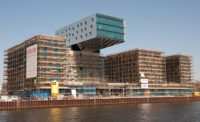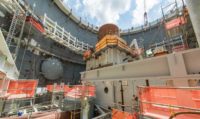Global Event
Earth Day 1970 was just the beginning. In 1990, Hayes turned it into a global event. This year, one billion people in 192 nations participated in Earth Day celebrations. “Denis moves through the many outrages of the environmental movement without becoming pessimistic,” says Kathleen Rogers, president of the Earth Day Network, which Hayes chairs. “I’ve never heard him raise his voice,” she adds, describing him as cool, calm and collected—at least on the surface.
For Hayes, the solar book is a bittersweet back-to-the-future crusade. In 1977, W.W. Norton & Co. published his “Rays of Hope: The Transition to a Post-Petroleum World.” He wrote: “The entire world thus stands at the edge of an awesome discontinuity in its production and use of energy. To fill genuine needs for electricity, the most attractive technology in many parts of the world will be direct solar conversion.”
In 1978, Hayes organized Sun Day, co-chaired by Rosalynn Carter and Robert Redford. And from 1979-81, he directed the Solar Energy Research Institute (SERI), now called NREL.
At SERI, Hayes had an ambitious plan to build a showcase for solar technologies and a living laboratory for research into crystalline silicon photovoltaics—the current technology (ENR 4/10/80 p. 16). His plan was shattered in June 1981, when President Ronald Reagan pulled the plug on SERI’s PV research and upped the budget for nuclear power.
Reagan dismissed—with two weeks notice and no severance pay—370 of SERI’s 959 employees and slashed the budget 50% to about $50 million. “It was brutal,” says Hayes, who resigned just before he would have been dismissed.
Low Point
He spent the next year writing letters of recommendation for the couple-hundred scientists he had lured away from tenured university positions. “It was the low point of my life—worse than the death of my parents,” he says.
Hayes slowly recovered but PV research largely went into hibernation. “We could be so far ahead of other nations if support had been continued,” he says.
Hayes’ youth planted the seeds for his lifelong mission to save the planet. The paper mill on the Columbia River in Camas, Wash., where his father worked beginning in 1951, put food on the family table but traumatized the young Hayes by belching toxins from its smokestacks—killing wildlife, polluting the river and sickening people. Loggers also clear-cut much of the nearby woods.
“It was normal to wake up every day with a sore throat,” says Hayes.










Post a comment to this article
Report Abusive Comment